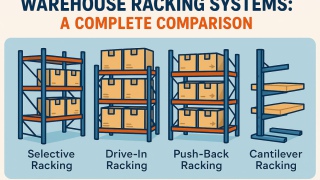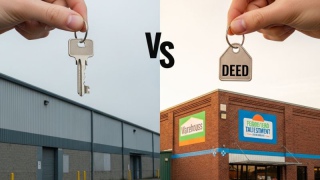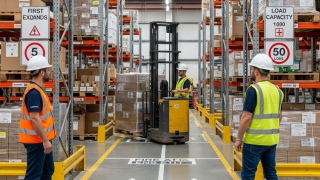Sustainable Warehousing: How to Reduce Your Environmental Impact
In an era of increasing environmental awareness and stringent regulations, the logistics and warehousing sector faces mounting pressure to adopt sustainable practices. The concept of "green logistics" is no longer a niche idea but a crucial imperative for businesses aiming to reduce their carbon footprint, enhance their reputation, and achieve long-term viability. This article delves into the multifaceted aspects of sustainable warehousing, offering actionable strategies to minimize environmental impact while maintaining operational efficiency.

The Environmental Footprint of Warehousing
Warehouses, by their very nature, are significant consumers of energy and resources. Their environmental impact stems from various sources:
-
Energy Consumption: Lighting, heating, cooling, and the operation of material handling equipment (MHE) contribute substantially to electricity consumption, often derived from fossil fuels.
-
Waste Generation: Packaging materials, damaged goods, obsolete inventory, and general office waste all contribute to landfill burden.
-
Transportation Emissions: The inbound and outbound movement of goods to and from warehouses generates considerable carbon emissions from trucks, vans, and other vehicles.
-
Land Use and Biodiversity: The construction of large warehouse facilities can lead to habitat destruction and increased impervious surfaces, impacting local ecosystems and water runoff.
-
Water Usage: While often overlooked, water is used for sanitation, landscaping, and sometimes for specific operational processes.
The Business Case for Sustainable Warehousing
Beyond environmental stewardship, there’s a compelling business case for embracing sustainable warehousing practices:
-
Cost Savings: Reduced energy consumption translates directly into lower utility bills. Efficient waste management can decrease disposal costs, and optimized transportation routes save on fuel.
-
Enhanced Brand Reputation: Consumers and business partners increasingly prioritize sustainability. A commitment to green practices can boost a company's image, attract environmentally conscious customers, and improve stakeholder relations.
-
Regulatory Compliance and Risk Mitigation: Governments worldwide are implementing stricter environmental regulations. Proactive adoption of sustainable practices ensures compliance, avoiding potential fines and legal issues. It also mitigates risks associated with resource scarcity and climate change impacts.
-
Improved Employee Morale and Retention: Employees are often proud to work for environmentally responsible companies. Sustainable workplaces can lead to higher job satisfaction and better talent retention.
-
Increased Efficiency and Innovation: The pursuit of sustainability often sparks innovation in processes, technology, and facility design, leading to overall operational improvements.
-
Competitive Advantage: Companies demonstrating strong sustainability credentials can gain a competitive edge in tender processes and attract new business opportunities.
Key Strategies for Sustainable Warehousing
Implementing sustainable warehousing involves a holistic approach, addressing energy, waste, transportation, and facility design.
1. Energy Efficiency: Powering Down the Footprint
Energy consumption is often the largest contributor to a warehouse's carbon footprint. Significant reductions can be achieved through:
-
LED Lighting Systems: Replacing traditional fluorescent or incandescent lighting with LEDs can reduce lighting energy consumption by 50-70%. Smart lighting systems with motion sensors and daylight harvesting capabilities can further optimize usage.
-
Optimized HVAC Systems: Implementing energy-efficient heating, ventilation, and air conditioning (HVAC) systems is crucial. This includes:
-
Improved Insulation: Properly insulating walls, roofs, and windows minimizes heat loss in winter and heat gain in summer.
-
Smart Thermostats and Zone Control: Allowing for precise temperature control in different areas based on occupancy and need.
-
Regular Maintenance: Ensuring HVAC systems are well-maintained for optimal performance.
-
Natural Ventilation: Designing warehouses to maximize natural airflow and cross-ventilation, reducing reliance on mechanical cooling.
-
-
Renewable Energy Sources:
-
Solar Panels: Installing rooftop solar photovoltaic (PV) panels can generate a significant portion, if not all, of a warehouse’s electricity needs, drastically reducing reliance on grid power.
-
Wind Turbines: In suitable locations, small-scale wind turbines can supplement energy supply.
-
Purchasing Green Energy: For facilities where on-site generation isn't feasible, purchasing electricity from renewable sources (e.g., wind, solar, hydro) through green energy contracts is a viable alternative.
-
-
Energy-Efficient Material Handling Equipment (MHE):
-
Electric Forklifts: Transitioning from propane or diesel-powered forklifts to electric models significantly reduces direct emissions and noise pollution.
-
Automated Guided Vehicles (AGVs) and Robotics: These can be designed for energy efficiency, often operating on electric power and optimizing movement paths to minimize energy use.
-
Opportunity Charging and Battery Management: Implementing efficient battery charging strategies and utilizing lithium-ion batteries can improve energy efficiency and extend battery life.
-
-
Building Management Systems (BMS): A sophisticated BMS can integrate and control various building systems (HVAC, lighting, security, MHE charging) to optimize energy consumption, monitor performance, and identify areas for improvement.
2. Waste Management: Towards a Circular Economy
Minimizing waste generation and maximizing resource recovery are fundamental to sustainable warehousing.
-
Reduce, Reuse, Recycle (The 3 Rs):
-
Reduce: Focus on minimizing the amount of packaging entering the warehouse. Work with suppliers to reduce their packaging or use reusable containers.
-
Reuse: Implement reusable pallets, totes, and containers in internal and external logistics loops. Consider reverse logistics for the return and reuse of packaging materials.
-
Recycle: Establish comprehensive recycling programs for cardboard, plastic film, wood, metal, and electronic waste. Ensure proper segregation and collection.
-
-
Optimized Packaging:
-
Right-Sizing: Use packaging that is appropriately sized for the product to minimize void fill and material usage.
-
Recyclable and Biodegradable Materials: Prioritize packaging made from recycled content or easily recyclable/biodegradable materials.
-
Innovative Packaging: Explore air-filled packaging, mushroom packaging, or other sustainable alternatives.
-
-
Waste Audits: Regularly conduct waste audits to understand the types and quantities of waste generated, identify sources, and pinpoint opportunities for reduction.
-
Composting: If applicable, compost organic waste from office areas or staff cafeterias.
-
Donation and Repurposing: Donate unsalable but usable goods to charities or explore options for repurposing damaged items.
-
Reverse Logistics for Returns: Efficiently manage product returns to minimize waste. Refurbish, repackage, or recycle returned items where possible.
3. Green Logistics and Transportation Optimization: Shrinking the Carbon Footprint of Movement
Transportation is a major contributor to a company’s overall carbon footprint. Sustainable warehousing extends beyond the four walls to encompass inbound and outbound logistics.
-
Route Optimization and Planning: Utilize advanced logistics software to optimize delivery routes, minimizing mileage, fuel consumption, and transit times.
-
Consolidation and Full Truckload (FTL) Shipments: Consolidate shipments to maximize vehicle capacity and reduce the number of trips. Prioritize FTL over less-than-truckload (LTL) whenever possible.
-
Fleet Modernization: Invest in fuel-efficient vehicles, electric vehicles (EVs), or vehicles powered by alternative fuels (e.g., natural gas, hydrogen).
-
Backhauling and Collaborative Logistics: Coordinate with partners to utilize empty return trips (backhauling) and explore collaborative logistics initiatives to share transportation resources.
-
Intermodal Transportation: Where feasible, shift from road-only transportation to intermodal solutions (e.g., rail, barge) for long-haul movements, which are generally more energy-efficient per ton-mile.
-
Last-Mile Delivery Solutions: For urban deliveries, explore electric vans, cargo bikes, or even drone delivery for smaller packages.
-
Strategic Warehouse Location: Locating warehouses closer to key markets or suppliers can significantly reduce transportation distances.
4. Sustainable Building Design and Operations: The Foundation of Green Warehousing
The design and ongoing operation of the warehouse facility itself play a critical role in sustainability.
-
Green Building Certifications: Pursue certifications like LEED (Leadership in Energy and Environmental Design) or BREEAM (Building Research Establishment Environmental Assessment Method). These frameworks provide a holistic approach to sustainable building design, construction, and operation.
-
Sustainable Materials: Use recycled, locally sourced, and low-VOC (volatile organic compound) materials for construction and interior fit-outs.
-
Water Conservation:
-
Low-Flow Fixtures: Install low-flow toilets, urinals, and faucets to reduce water consumption.
-
Rainwater Harvesting: Collect rainwater for non-potable uses such as landscaping irrigation or toilet flushing.
-
Drought-Tolerant Landscaping: Choose native plants that require minimal irrigation.
-
-
Stormwater Management: Implement permeable paving, green roofs, and bioswales to manage stormwater runoff, reduce pollution, and replenish groundwater.
-
Temperature Control and Air Quality: Ensure proper ventilation, use low-emission cleaning products, and manage dust to maintain healthy indoor air quality for employees.
-
Digitalization and Automation:
-
Paperless Operations: Implement digital documentation and communication to reduce paper consumption.
-
Warehouse Management Systems (WMS): Use WMS to optimize inventory placement, picking routes, and overall operational flow, leading to greater efficiency and reduced energy waste.
-
Automation: Automated systems, when designed and operated efficiently, can reduce the need for extensive lighting and heating in certain areas, and optimize movement patterns.
-
5. Employee Engagement and Training: The Human Element of Sustainability
A successful sustainability program requires the active participation of all employees.
-
Awareness and Education: Educate employees on the importance of sustainability and the company's environmental goals.
-
Training: Provide training on waste segregation, energy-saving practices, and the proper use of sustainable equipment.
-
Incentives and Recognition: Recognize and reward employees who contribute to sustainability efforts.
-
Employee Involvement: Encourage employees to submit ideas for green initiatives and form green teams.
Measuring and Reporting Progress
To truly understand and improve environmental performance, it’s essential to measure and report key metrics.
-
Key Performance Indicators (KPIs): Track metrics such as:
-
Total energy consumption (kWh) and energy consumption per square meter.
-
Carbon emissions (Scope 1, 2, and 3).
-
Waste generated (kg) and waste diverted from landfill (recycling rate).
-
Water consumption (liters).
-
Fuel consumption per mile/kilometer.
-
-
Regular Audits: Conduct regular environmental audits to assess compliance and identify areas for improvement.
-
Sustainability Reporting: Publish annual sustainability reports (e.g., using frameworks like GRI – Global Reporting Initiative) to demonstrate transparency and commitment to stakeholders.
Conclusion
Sustainable warehousing is not merely a trend but a strategic imperative for modern businesses. By focusing on green logistics, reducing their carbon footprint, and embedding sustainability into every aspect of their operations, warehouses can achieve significant cost savings, enhance their brand reputation, ensure regulatory compliance, and contribute positively to environmental preservation. The transition to greener practices requires investment, innovation, and a commitment from leadership, but the long-term benefits – both environmental and economic – far outweigh the initial challenges. As the world moves towards a more sustainable future, warehouses that embrace these principles will not only thrive but also lead the way in responsible business practices.
_0x70_d59.png)



